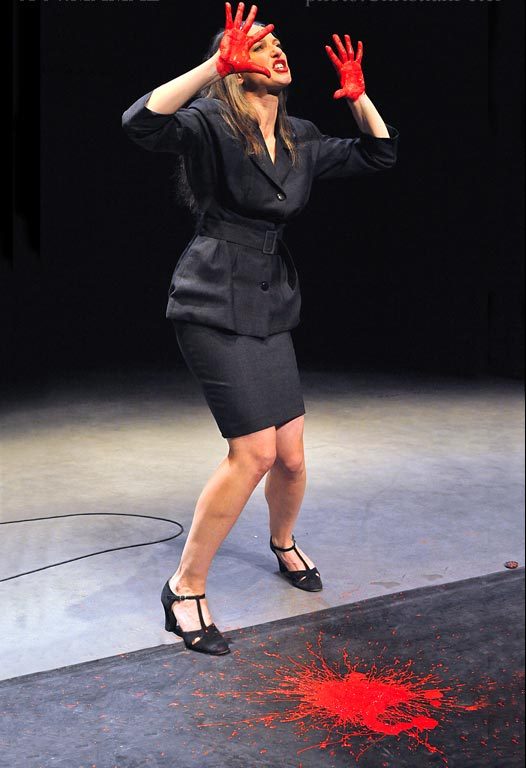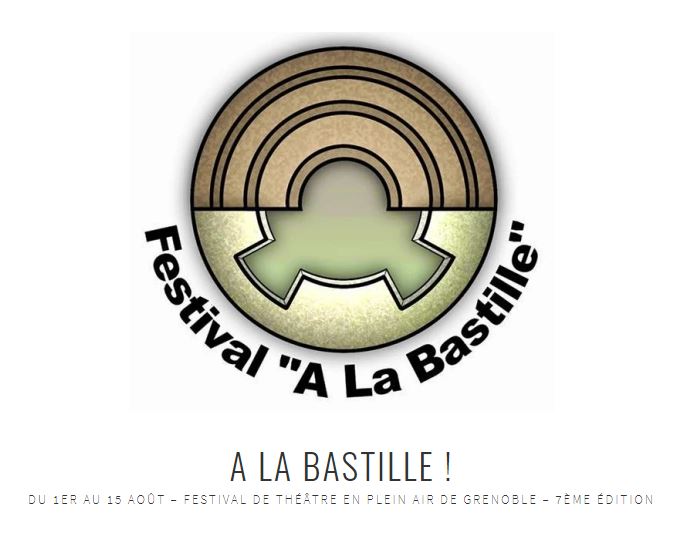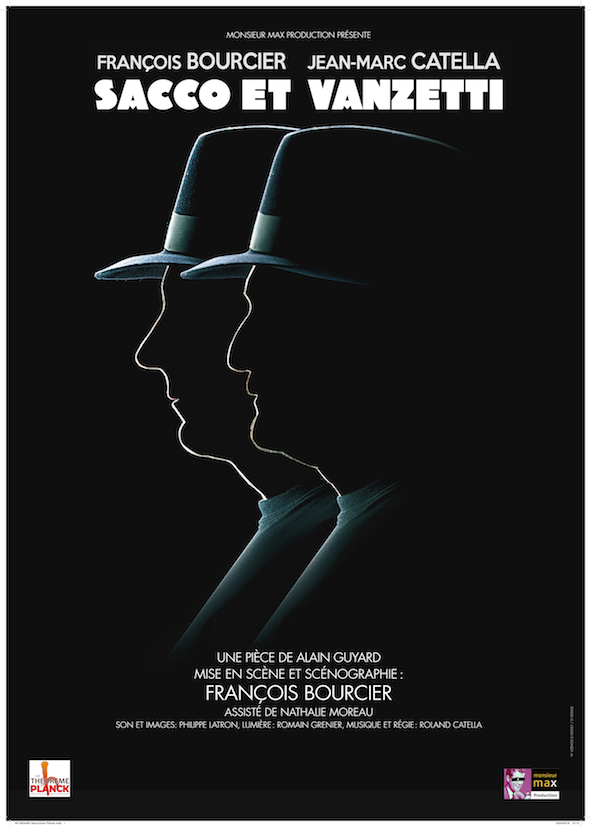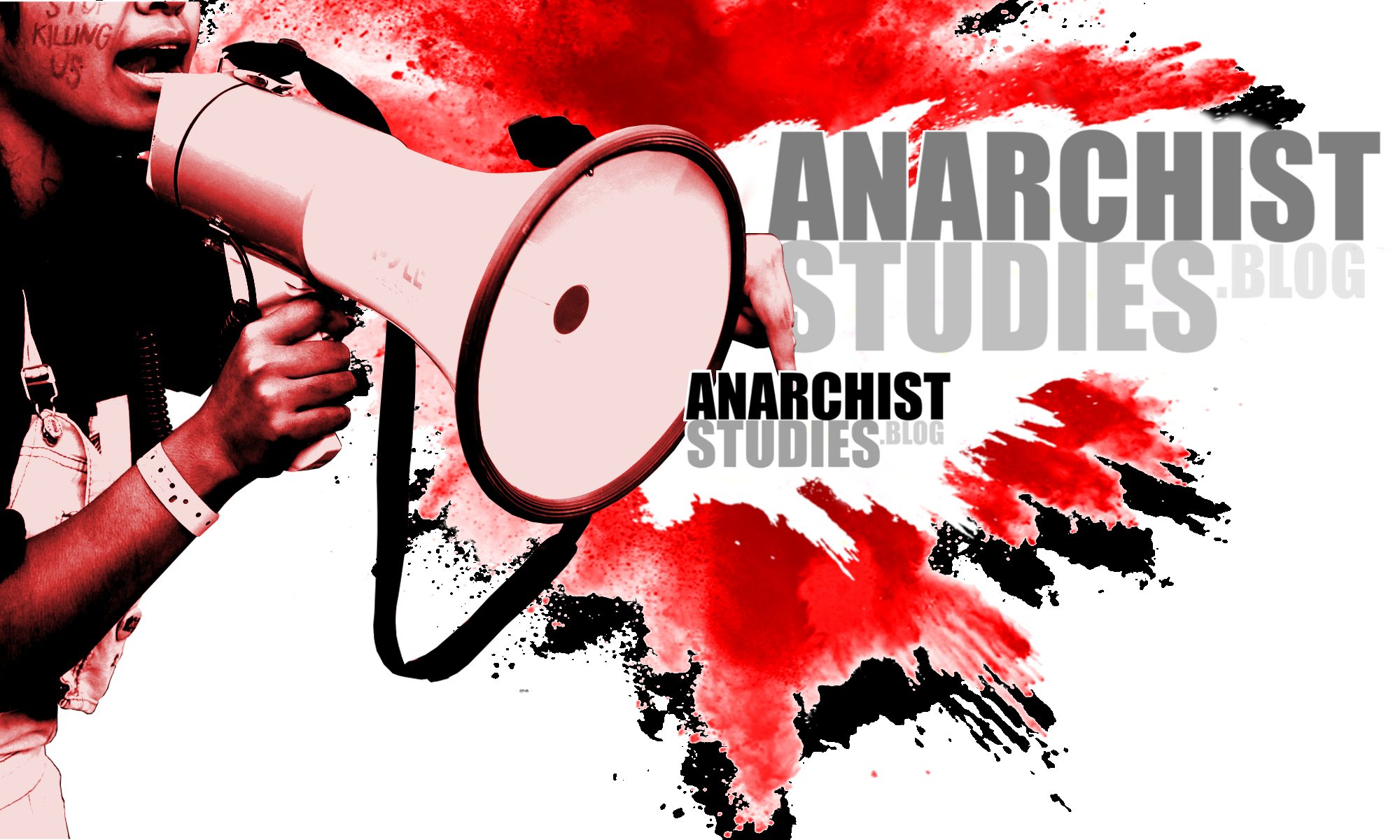by Camille Mayer
1st December 2020

In fin-de-siècle Paris, anarchist theoreticians and activists promoted their social ideals through cultural productions, such as literature, songs and drama. Their artistic perspectives combined the legacy of the “Art Social” movement with traditional anarchistic theories. The anarchist movement proposed a complex network of dramatic productions, and this network produced a considerable number of events and dramatic material which, in turn, enabled a unique debate on what art and drama should be and do. Readings and dramatic stagings contributed to a sense of belonging to the anarchist movement for workers and their families. Until 1906, censorship, coupled with anti-anarchist laws that were passed after the 1894 terrorist attacks led by anarchist activists, impacted anarchist dramatic productions, and the weakening of anarchism during the 20th century seems to have slowed down the production of French anarchist dramas.
Today, there remains a desire to stage anarchist dramatic performances in France, yet left-libertarian artists are confronting a new dilemma. If they want to effectively communicate anarchist ideas, they have no choice but to use capitalist channels, even though they are fighting against the very ideology of those channels. They usually find a compromise by minimising their anarchist intentions, hoping that the ideas will still be communicated to the audience.
Female anarchist activists and dramatists are faced with an even greater challenge. This account of anarchist theatre and censorship in contemporary France highlights the difficulties faced by women in the French dramatic industry, regarding their condition both as women and as anarchists. They deal with a similar degree of implicit censorship as their male counterparts, but also have to face paternalism and a lack of recognition. Interestingly, unlike their male fellows, female dramatists’ choice to stage well-known anarchist figures such as Louise Michel and Emma Goldman turns out to be a way of escaping capitalism as well as patriarchy. However, their dramatic style and mode of production also prove to validate the sovereignty of capitalistic and patriarchal domination.

Contemporary dramatic censorship for anarchist drama
As Irène Pereira noticed, “anarchism” implies three levels of meaning. From a philosophical perspective it is “the refusal of any foundation of knowledge or social order on a primary principle, whether it is God or nature” (2020: 9). Understanding of the world and interpersonal relationships would therefore be based on social constructions. From an ethical perspective, anarchism is “a way of life resting upon the assertion of one’s own individuality” (2020: 9). This ideology insists that the collective should not overshadow the individual. Finally, from a political perspective, anarchism is “the refusal of any hierarchical social organization, whether this organization is political or economic” (2020: 9). Importantly, French anarchist dramatic artists, whether they consider themselves anarchists on a philosophical, ethical, or political level, seem reluctant to stand up for their ideals in the public sphere. In spite of their anarchistic storytelling or characters, or the anarchist production values of activists, almost none of the 34 performances that I am studying are publicly defined as “anarchist” or any other phrasing that would imply they are close to this movement.
Before 1840 and Proudhon’s reappropriation of the term “anarchism” in a positive sense, being described as “anarchist” was pejorative. Today, in France, it still seems to refer to destruction and terrorism, or disorder and anomy. Let’s take a concrete example: Philippe Bazatole, the director of a theatre company, organises a small festival in Grenoble every year. He is an activist, a Gilets Jaunes, and stands up for anarchist values on his personal Facebook page. The festival’s website describes it as “a tad poetical, anarchist and left-libertarian, but we’d rather say normal” (Festival à la Bastille 2020). This summer, for the seventh edition of the festival, Philippe was interviewed by France 3, a mainstream TV channel. Even though the interview was shared on social media as an anarchist event, Philippe did not explicitly present his festival as anarchist during this interview. He only said that “the specificity of this festival is that it welcomes everybody who wants to perform” (Bazatole in Stiti 2020). It is a real struggle for dramatic artists to claim their anarchist stance, since it is popularly conceived in a pejorative way. It leads to either a lack of visibility or to compromise: artists hide their political opinions, hoping they will be able to stage a production, and then convey their ideas through their performances.

The second implicit censorship concerning French contemporary anarchist drama is the result of economic liberalism. There are three performances I consider relevant in exploring the capitalist appropriation of anarchism and the capitalist censorship of anarchist performances. The first, Sacco and Vanzetti, written by Alain Guyard, narrates Sacco and Vanzetti’s story and is promoted as a “duty of remembrance” on the website of the production company. It is interesting that the playwright, Alain Guyard, is a philosopher and has written a lot about anarchism. He uses philosophy as a material to understand, and help people understand, the world they live in. He specialises in what he calls “fairground philosophy” and works in diverse places and territories. As he told me in 2018, anarchism is the only way for humankind to live with dignity. His play has been staged by François Bourcier since 2012, for the company Théorème de Planck. Paradoxically, this production is by a big company called “Monsieur Max prod”, which sells the play as a DVD hard copy, thus integrating the performance into the big capitalistic channels. I second Jim Donaghey’s statement that “any aesthetic that is identified as ‘anarchist’ is immediately undercut by non-anarchist manifestations of that same aesthetic – but in an even more fundamental sense, it shouldn’t be possible to identify an anarchist aesthetic” (Noys 2020: 15).

To take another example, Nadège Prugnard’s performances are sometimes subject to censorship, even though they are subsidised by the public French dramatic industry. She told me that she did a performance in Paris on a pretty famous stage some years ago, during which she screamed “Fuck state-supported theatre”. At the end of the representation, the owner of the theatre asked her not to come back. According to him, it was not something to say, even while you are performing. Here, it is not about capitalistic appropriation but rather about capitalistic censorship: Nadège, one of the only artists I’ve found who’s not afraid to claim her anarchist stance, wasn’t allowed to criticise the system, even in the context of her art.
Finally, I would like to point out the difficulty of subverting production aesthetics when it comes to “staging anarchism”. Out of the 15 plays featuring anarchist figures, and the 19 plays about anarchism, only two attempt an anarchist or subversive aesthetic, and only three question the form of the discourse. So, either the subversive aesthetics produced by anarchist dramatic artists are rapidly seized upon by capitalism; or these subversive aesthetics are censored by producers and theatres; or anarchist artists in fact use classical codes, referring to historic performances or even “classical bourgeois drama”. In any case, it seems that their anarchist intentions cannot be reliably identified solely in the aesthetics of their work, and that these dramatic artists need to find new paths towards left-libertarian creation, and new paths towards their audience also.
Of course, in order to preserve their values as far as possible, anarchist dramatic artists sometimes deny the possibility of using state and capitalistic channels, such as state subsidies or even public stages (though this is certainly not always the case). This posture, which I called anarchist inflexibility, can also be seen as self-censorship.
The female condition in anarchistic dramatic production
In July 2018, Carole Thibault, director of the National Dramatic Centre of Montluçon, delivered a speech during the Avignon festival. She reminded the audience that in 2018, only 23% of state subsidies were granted to performances produced by women, and only 11 % of the dramatic programme was produced by women. She refused a false Molière (the most prestigious French theatre award), denouncing the patriarchy and the hypocrisy of the French dramatic industry. The same year, along with Nadège Prugnard, she produced a performance named Hubertine, Louise et les autres during the Women’s heritage Days of the Théâtre des Ilêts. It was about celebrating the inheritance of activist women who left a mark on social and political French history. Louise Michel was one of the characters.
We will return to Louise Michel in a moment, but first it will be illuminating to describe a little experiment I did during the festival that same year, in 2018. In Avignon there is a main street where all the companies promote their performances. I stood on the street and spoke with every person who approached me to try to promote their show. Each time I asked: “Are you an anarchist?” And in most cases, men would say “I am indeed!”. But, when I contacted them later on to further discuss their artistic project and asked if I could study it, I would not hear from them again. Furthermore, when I appealed for anarchist playwrights on anarchist Facebook groups, only one female performer told me she was an anarchist, whilst a dozen male playwrights contacted me; and all the projects that I was offered were led by male artists. I can’t say it is representative of French anarchist production, but it still seems relevant to notice there is kind of a fantasy around the “anarchist ideal” until it actually comes to publicly standing up for it. As for the proportion of men and women in anarchist dramatic productions, the data I’ve gathered over the past four years is as follows:
- Out of the 34 performances that I considered relevant, 15 are about famous anarchists and 19 are about anarchism.
- 8 projects on famous anarchists (about Louise Michel and Emma Goldman) are led by women, 6 (about Louise Michel, Alexandre Marius Jacob, and Sacco and Vanzetti) are led by men and one (about Alexandre Marius Jacob) is led by both a man and a woman (but decisions are still mostly taken by the man).
- Regarding performances concerned with anarchism, 6 are produced by women (including one transgender woman) while 12 are produced by men, and 1 is produced by two anarchists, a transgender man and a woman (though the man is leading the project). Among those 6 productions by women, it is interesting to note that two of them are not actually new fictional writings, but are contemporary stagings of classical anarchist plays.

Unlike their male counterparts, anarchist women chose to stage Louise Michel as a form of empowerment. Gisèle Martinez staged Calamity Louise to present and explain the anarchist ideal through Louise Michel’s life because Gisèle “met” anarchism by discovering the French activist and felt connected to her. Françoise Chatôt in Louise Emma depicts a meeting between Louise Michel and Emma Goldman, as if there had been some sort of emotional connection with the two women. Emmanuelle Bertho, who staged Louise M, told me about a similar connection with Louise Michel that led her to encourage the other women of her company to create a performance about the activist. Each of these projects are, one way or another, the result of a sensitive connection with Louise Michel and intend to enlighten women’s activism and bolster their strength.
When it comes to male projects, apart from Alain Duprat’s Louise Michel the she-wolf, staging Louise Michel is not about female empowerment at all. It seems to be a way to give credit to a historical contextualization rather than focusing on anarcha-feminist power. The writing of the dramatic text is also relevant here. Once again, apart from Alain Duprat who used archives to write his play, both Baptist Amann and Régis Vlachos fictionalised Louise Michel’s character, whereas every woman mentioned above used Louise Michel’s own words in their productions. I believe that it highlights the lack of legitimacy women feel when using their own words in dramatic work portraying historical figures.
It is important to highlight that Nadège Prugnard and Gisèle Martinez were both redirected to Louise Michel when they first talked to men about their desire to stage anarchism. They faced paternalism, as if the only way for a woman (who is already brave enough to stage the anarchist ideal) to be produced and understood is to refer to Louise Michel. Ultimately, referring to tutelary figures no longer acts as a means for empowerment, but simply becomes a new capitalist and patriarchal control on women’s artistic creation.

As a hegemonic force, capitalism seems to surround every aspect of dramatic creation. As it is impossible for artists to live on the fringes of society if they desire to produce themselves, they are trapped in the little space of subversion that capitalism temporarily allows them. There is a huge paradox here. Regarding women’s status, capitalism and patriarchy are working together. Each attempt to undermine one or both of them appears doomed to failure, the fragments of liberty that are achieved don’t result in emancipation from capitalism or patriarchy, but are “granted” by them, like a safety valve regulating the dialectical tensions between hegemonic and opposing powers.
This essay may not do much to turn the tables, but these issues were also recognised by classical French anarchists in the late 19th century. Our struggle is the same – so let’s keep fighting!
References
Festival à la Bastille webpage (2020), « Les spectacles de l’édition 2020 ». Available at: https://alabastillenet.wordpress.com (accessed 27 November 2020).
Ruud Noys (2020), What is anarchist music, Croatia/Ballygomorrah: Active distribution/Black Fox Boox.
Irène Pereira (2020), L’anarchisme dans les textes. Anthologie libertaire, Paris: Textuel.
Mérieme Stiti (2020), interview with Philippe Bazatole, France 3 Alpes, 12th August. Available at: https://www.facebook.com/compagnie.emotions/videos/635122987420045 (accessed 27 November 2020).
